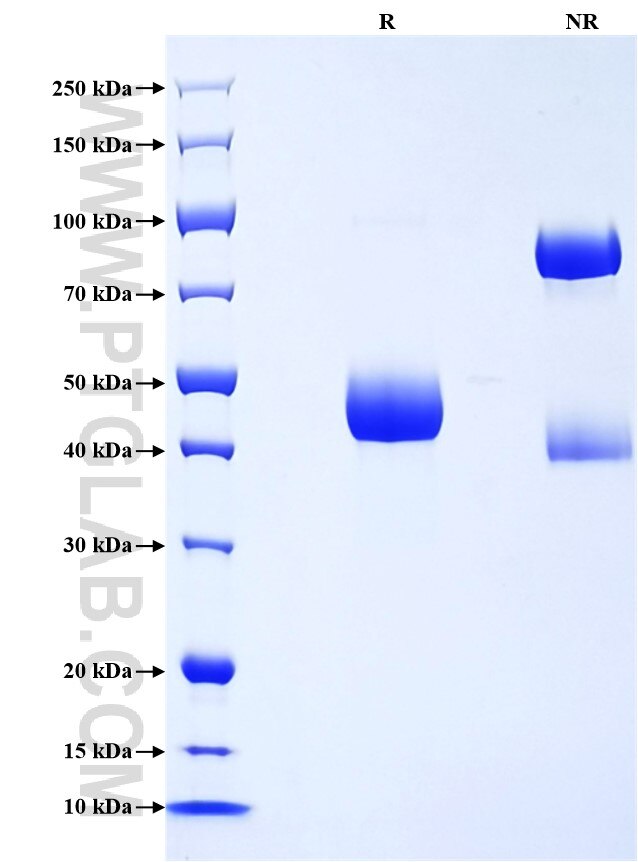Recombinant Rat GM-CSF protein (rFc Tag)
Species
Rat
Purity
>90 %, SDS-PAGE
Tag
N-rFc
Activity
not tested
Cat no : Eg3202
Validation Data Gallery
Product Information
| Purity | >90 %, SDS-PAGE |
| Endotoxin | <0.1 EU/μg protein, LAL method |
| Activity |
Not tested |
| Expression | HEK293-derived Rat GM-CSF protein Ala18-Lys144 (Accession# P48750) with a rabbit IgG Fc tag at the N-terminus. |
| GeneID | 116630 |
| Accession | P48750 |
| PredictedSize | 41.7 kDa |
| SDS-PAGE | 42-50 kDa, reducing (R) condition |
| Formulation | Lyophilized from 0.22 μm filtered solution in PBS, pH 7.4. Normally 5% trehalose and 5% mannitol are added as protectants before lyophilization. |
| Reconstitution | Briefly centrifuge the tube before opening. Reconstitute at 0.1-0.5 mg/mL in sterile water. |
| Storage Conditions |
It is recommended that the protein be aliquoted for optimal storage. Avoid repeated freeze-thaw cycles.
|
| Shipping | The product is shipped at ambient temperature. Upon receipt, store it immediately at the recommended temperature. |
Background
GM-CSF (also known as CSF2) is a member of the CSF family of hematopoietic growth factors and was originally identified as a stimulus that induces the differentiation of bone marrow precursor cells into granulocytes and macrophages. GM-CSF is secreted as monomeric glycoprotein. Multiple cellular sources of GM-CSF have been described, including epithelial cells, endothelial cells, fibroblasts, stromal cells, and hematopoietic cells. GM-CSF not only stimulates granulocyte proliferation and differentiation but also promotes vasculogenesis via chemotactic macrophages and neutrophil generation. GM-CSF has a wide range of biological activities in innate and adaptive immunity, and it plays a key role in many autoimmune and inflammatory diseases.
References:
1.Becher B. et al. (2016) Immunity. 45(5):963-973. 2.Ingelfinger F. et al. (2021) Semin Immunol. 54:101518. 3.Chen Y. et al. (2023) Front Immunol. 14:1158859. 4.Wei W. et al. (2023) Mol Hum Reprod. 30(1):gaad042.
